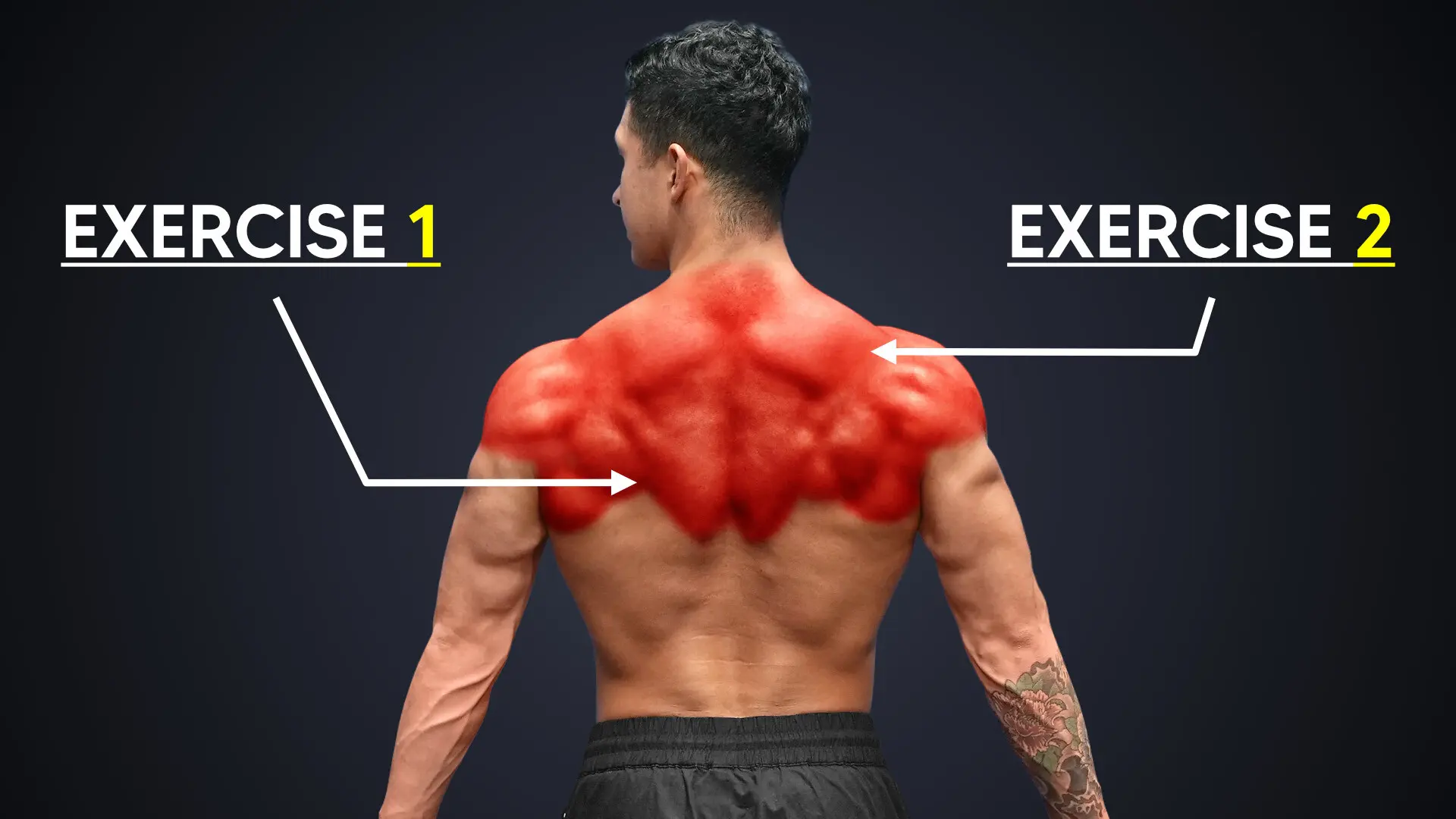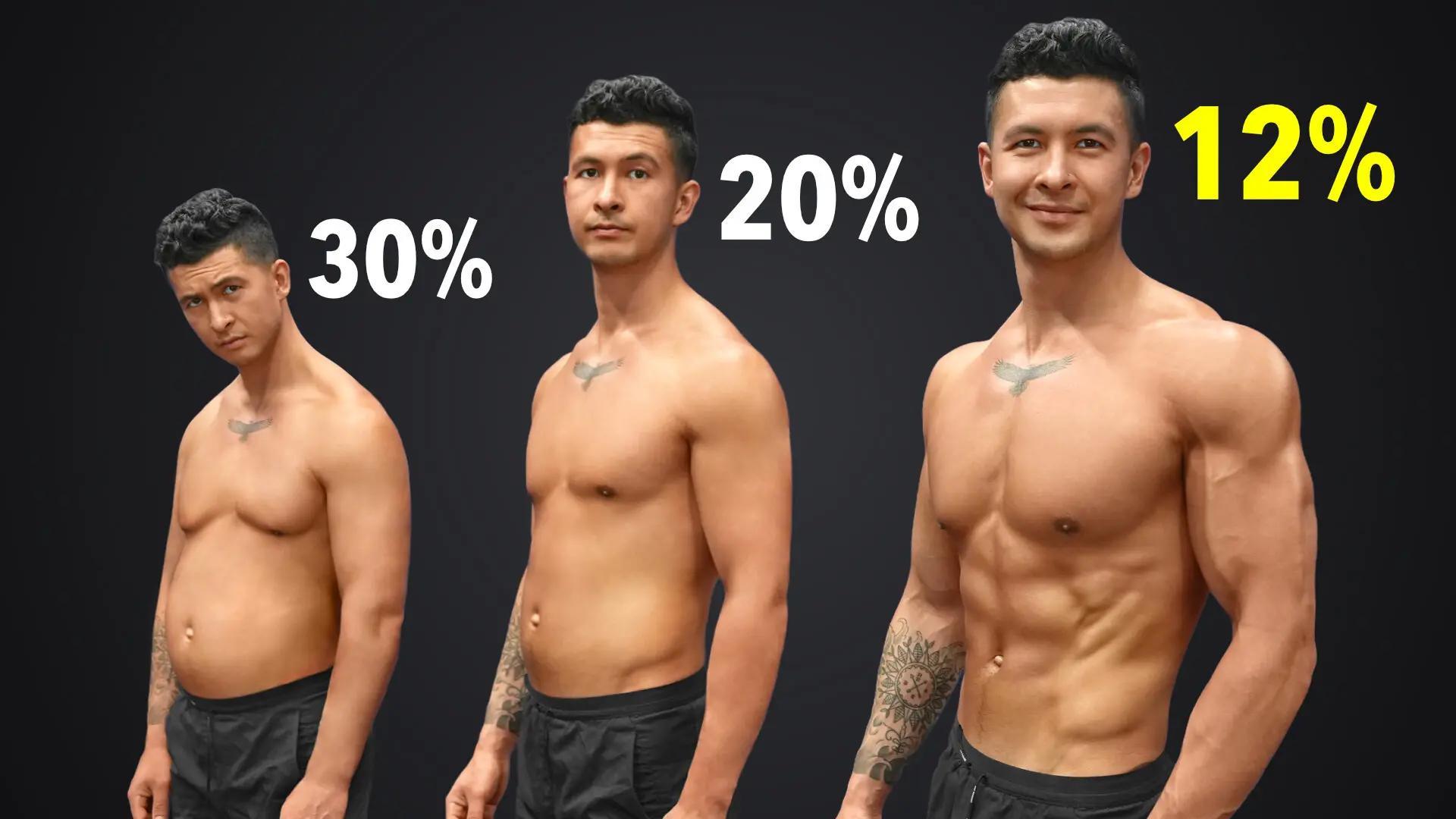
The Barbell Squat: How To Do It PROPERLY For Growth (4 Easy Steps)
The barbell squat is KING ... of poorly performed exercises. But you don't have to make the same mistake as others. Learn how to (finally) do it properly for growth in 4 easy steps.
Do the barbell squat wrong, and instead of growing nice quads and glutes, you'll feel aches and pains in your knees, hips, back, and even shoulders.
BUT follow these 4 easy steps, and I guarantee the barbell squat will feel and grow your muscles far better than it ever has before.
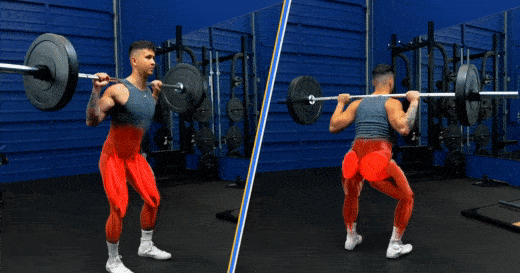
Step 1: Find The Right Setup For The Barbell Squat — For Your Body
There is no one fixed, universal "perfect barbell squat form". Instead, your anatomy will determine what your perfect squat looks like on the barbell squat.
So, it's important to find the right setup for you and your body before you even get under the bar.
Foot Stance
Let's start with your foot stance. Hold a light weight at your chest, set your feet hip-width apart, and squat down.
How does that feel? Note how low you could get.
Now, widen your stance by an inch or two and compare. Even the slightest modification in your stance can make a world of difference for knee and hip pain — so keep going until you find what feels best and enables you to squat the lowest.
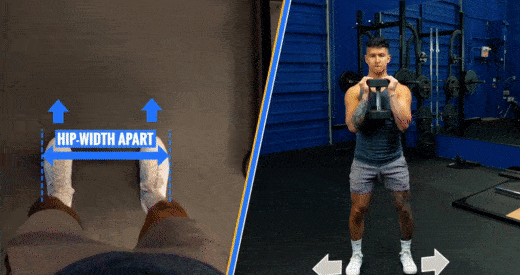
As for your foot angle? Most people's joints will feel better with their toes pointed out slightly, so don't force yourself to keep them straight.

And the wider the stance you use, the more your toes will have to turn out.
Bar And Hand Placement
Once you’ve found the right stance, it’s time to grab the bar:
- Set your feet under the bar
- Half squat to get under it, and
- Place the bar on your upper back
But avoid placing it too high on the little bony bump at the base of your neck. Instead, the barbell should be placed right on the meat of your traps.

Next, grip the bar with your hands as narrow as possible without pain in your wrists, shoulders, or elbows. The narrower they are, the more upper back tightness and stability you'll have when you do the barbell squat.

But if you have really tight shoulders or chest muscles, you may have to widen this.
How To Nail Your Walkout On The Barbell Squat
Once you've grabbed the bar, walk it out by extending your legs to lift it out of the rack and then taking three careful steps:
- Take a little step back with one foot,
- A little step back with your second foot, and then
- Use the third step to widen or adjust your feet to your ideal squat stance
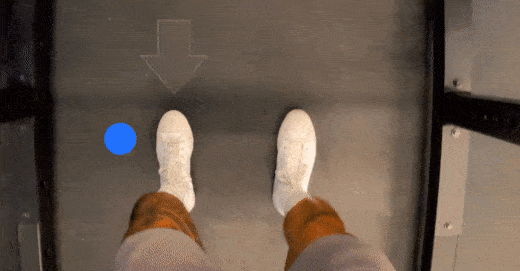
Lastly, to keep you balanced as you perform the barbell squat, spread your weight evenly over your foot by making sure each foot has three solid points of contact with the ground: 1) your big toe, 2) your pinky toe, and 3) your heel.
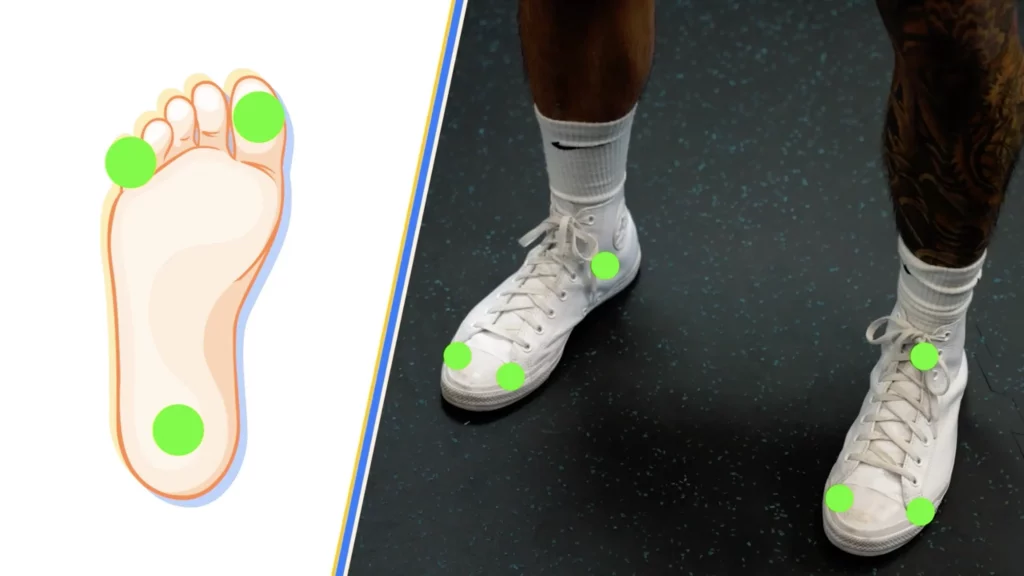
You're now ready for step 2: creating whole-body tension.
Step 2: Create Whole Body Tension
At this point, you don't want to just squat down.
You need to first activate several key muscles that will protect your back and keep you strong as you do the barbell squat. In fact, failure to do this is why many people have a very strong leg press — but a much weaker and unstable barbell squat.
So, let's start with the lower body:
- Screw your feet into the ground as if you were trying to touch your heels together
- Then, level your pelvis with the floor by tilting it back as if it were a bowl of water and you were trying to prevent it from spilling
- Once adjusted, lock this in by squeezing your inner thighs, glutes, and quads

And for the upper body, avoid pointing your elbows back and losing tightness in your upper back. Instead, pull your elbows forward, under the bar, and pull the bar down into your meaty upper traps. As if you were trying to bend the bar in half. This helps activate your lats and keeps your upper back stable.
Finally, take a deep 360 breath into your waist — as if you were trying to expand all sides of a weight belt. And then, brace your core as if you just coughed really hard.
At this point, you should feel your legs, core, and lats all working.
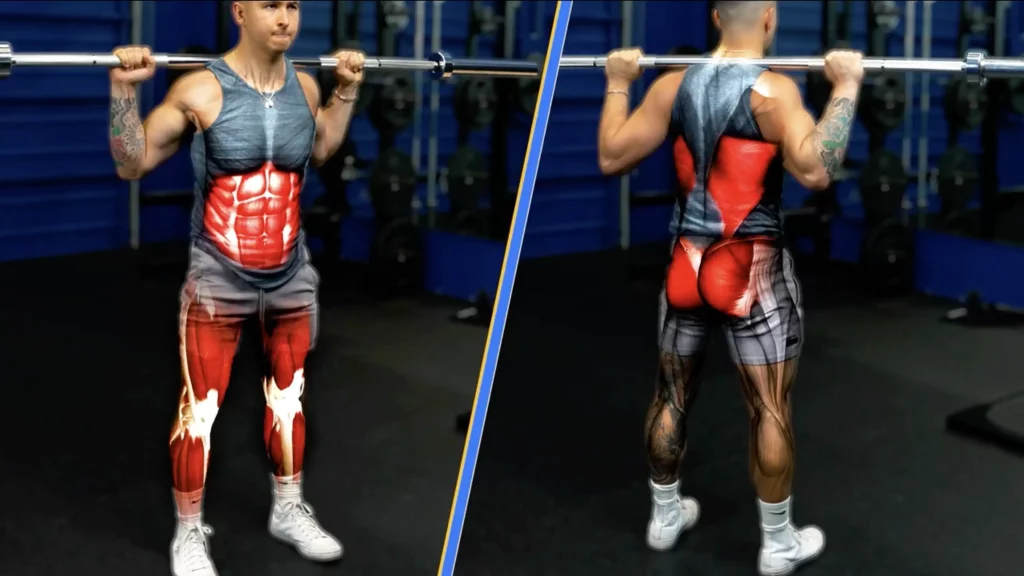
You’re ready for step 3: the descent.
Step 3: Control Your Descent
Pull yourself down into the squat using your hamstrings. Let your butt drop down between your heels and push your knees out in the same direction as your toes.
Keep your upper back tight by pulling the bar down and continue lowering as deep as you comfortably can.
How Deep Should You Go On The Barbell Squat?
As for how deep you should go on the barbell squat, a 2019 study assigned one group of subjects to half squats and another to deep squats twice a week for 10 weeks.
Both groups had similar growth in the quads, but the glutes and adductors grew significantly more in the deep squat group.
So, your goal should be to squat down at least somewhere close to parallel on the barbell squat.
If you use a wider stance, it'll be closer to parallel, and if you use a narrower stance, you should be able to get it a bit deeper.
But if towards the bottom of your squat your:
- Upper body falls forward, or
- Heels come off the ground, or
- Lower back rounds excessively into "butt wink"
... these are all signs that you're not yet ready to go that deep on the barbell squat.
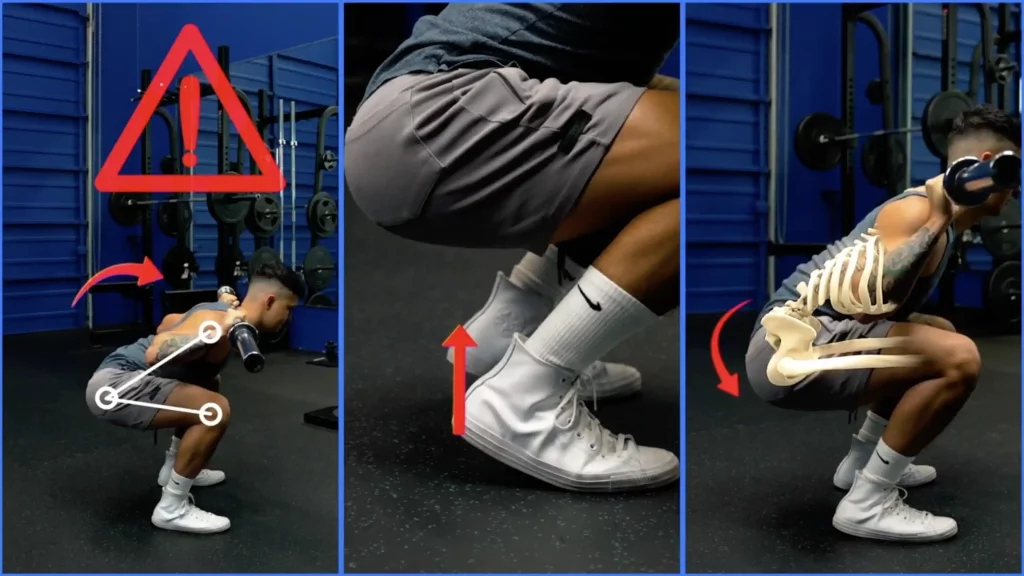
And there are 2 main reasons for this:
- Limited ankle mobility (most common reason). In this case, try elevating your heels onto weight plates and see if that helps. Psst: these stretch exercises can also help you regain mobility in your ankles.
- A weak core and glutes. In this case, you can try out a more stable exercise, like smith machine squats, before progressing to the barbell squat.
Knees Going Over The Toes On The Barbell Squat: Is This OK?
But once you can get deep enough, you may notice your knees end up over your toes. This is commonly believed to be harmful to the knees.
One study tested this by using a wooden barrier to prevent the knees from going over the toes.
While there was a bit less pressure on the knees when compared to letting them travel over the toes, the stress on the hips and lower back significantly increased.
So, as long as your knees don’t cave in or out and instead push out in the same direction as your toes, letting your knees go over your toes is perfectly fine.
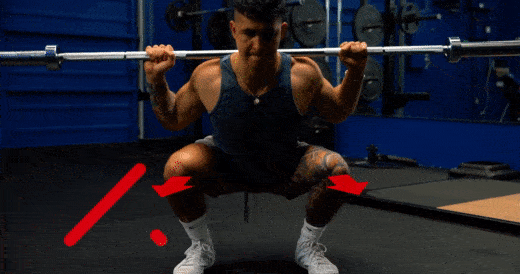
Now, once you reach the bottom position, to maximize growth, DO NOT let gravity drop you into that last inch or two.
As I've mentioned previously, research suggests this is the most important part of the movement for growth. So force your muscles to work by controlling the weight down and pausing for half a second at the bottom before moving onto step 4: the ascent.
But first, keep in mind that everyone’s bodies are different. To maximize your gains and prevent injury it’s crucial to find the right exercises and the right form for your individual structure. For a step-by-step plan that takes care of all the guesswork for you, take our analysis quiz to find the best program for you and your body below:
Click the button below to take my analysis quiz to discover the best program for you:
↓
Step 4: Ascent Out Of The Hole
The most common mistake people make here is shooting their hips back and letting their upper body fall forward. This puts a lot of pressure on the lower back.
We want the chest and hips to rise at the same rate.
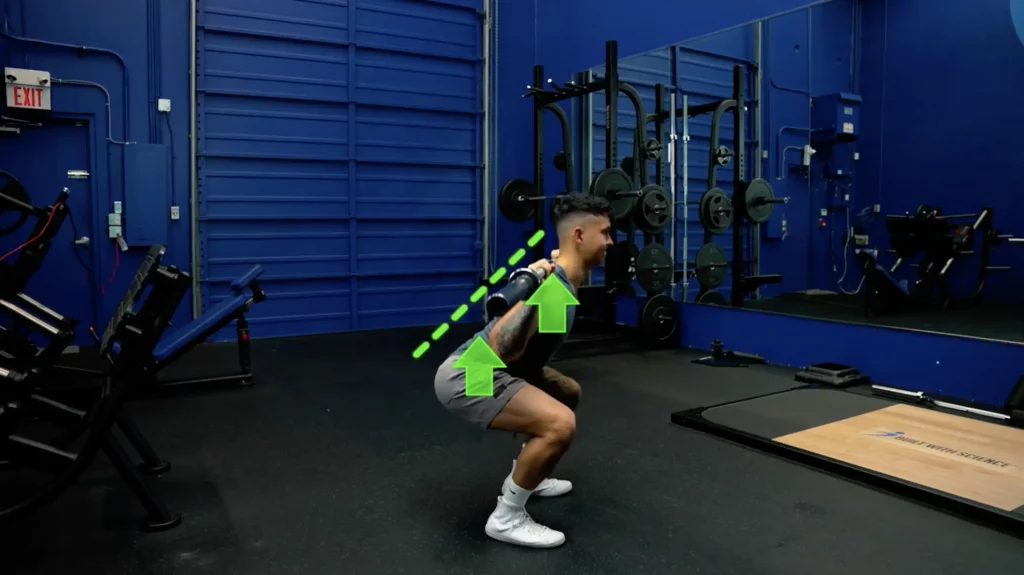
To do this:
- Drive up out of the bottom by pushing the floor away — and think about driving your traps up against the bar.
- Keep your glutes engaged by keeping your knees in line with your toes rather than caving them in.
- Continue pushing down against the floor and getting tall until your legs are fully extended.
- As you come to the top, avoid letting out a big exhale. Instead, maximize the pressure in your abdomen to protect your back by keeping your lips held tighter together as you breathe out, to gradually let the air out.
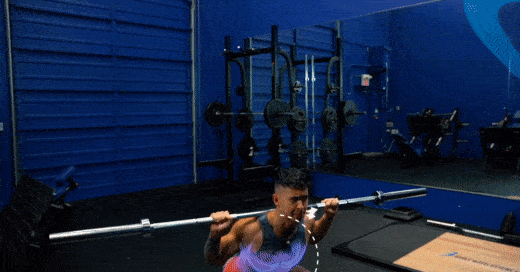
- Then, take another deep 360 breath in, brace, and repeat another rep.
Looking For More Exercise Form Tips? You're In The Right Place
Congrats, my friend! You've just learned how to properly perform the barbell squat. And for more exercise form tips:
- Click here to learn how to properly deadlift without hurting your back
- Click here to learn how to perform the dumbbell bench press for maximum chest gains
- Click here to learn how to bicep curl your way to sleeve-ripping arms
Alright, that's it. I'll see ya next time!



